
The Casa Rosada, literally the Pink House, is the president of the Argentine Republic's official workplace, located in Buenos Aires. The palatial mansion is known officially as Casa de Gobierno. Normally, the president lives at the Quinta de Olivos, the president of Argentina's official residence, located in Olivos, Greater Buenos Aires. The characteristic color of the Casa Rosada is baby pink, and it is considered one of the most emblematic buildings in Buenos Aires. The building also houses a museum, which contains objects relating to former presidents of Argentina. It has been declared a National Historic Monument of Argentina.
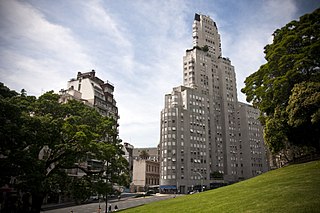
The Kavanagh Building is a residential skyscraper in Retiro, Buenos Aires, Argentina. Designed in 1934 by architects Gregorio Sánchez, Ernesto Lagos and Luis María de la Torre, it is considered a pinnacle of modernist architecture. At the time of its inauguration in 1936, the Kavanagh was the tallest building in Latin America surpassing the Palacio Salvo built in Montevideo, Uruguay in 1928, as well as the tallest building in the world with a reinforced concrete structure.

Manuel Mujica Lainez was an Argentine novelist, essayist and art critic.

Misteriosa Buenos Aires is a 1950 book of literary fiction by Manuel Mujica Lainez, containing no fewer that 42 short stories illustrating life in Buenos Aires from the time of its mythical First Foundation, in 1536, to 1904.

El laberinto is a 1974 novel by the Argentine writer Manuel Mujica Lainez.

El gran teatro is a 1979 novel by Argentine writer Manuel Mujica Lainez, part of his Buenos Aires series.

Juan Gelman was an Argentine poet. He published more than twenty books of poetry between 1956 and his death in early 2014. He was a naturalized citizen of Mexico, country where he arrived as a political exile of the Military Junta.

The House of the Angel is a 1957 Argentine drama film directed by Leopoldo Torre Nilsson based the novel of the same name by his wife Beatriz Guido, who also co-wrote the screenplay.
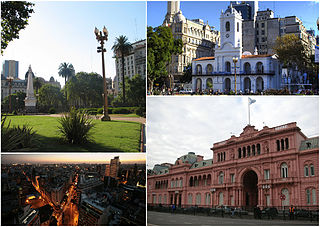
Monserrat or Montserrat is a neighbourhood in the east of the Buenos Aires CBD. The district features some of the most important public buildings in Buenos Aires, including city hall, the city legislature, Casa Rosada, the Colegio Nacional de Buenos Aires and the Libertador Building, among others.

Sara Gallardo Drago Mitre was an influential Argentine author and journalist.

The Buenos Aires International Book Fair is held every April in Buenos Aires, Argentina, and is one of the top five book expos in the world, oriented to the literary community as well as to the general public.

Buenos Aires City Hall was, until 2015, the seat of the Office of the Chief of Government of Buenos Aires, the capital city of Argentina. From its construction in 1914 to the reformation of the city's constitution in 1996, the building was the seat of the City Municipality. It faces the Plaza de Mayo, across from the Casa Rosada presidential palace, in the barrio of Monserrat.

The Argentina Bicentennial was a series of ceremonies, festivals, and observances celebrated on May 25, 2010, and throughout the year. They commemorated the 200th anniversary of the May Revolution, a sequence of historical events that led to the Viceroy Baltasar Hidalgo de Cisneros being ousted from office and replaced with the Primera Junta, the first national government.
María Esther Vázquez was an Argentine writer and journalist, best known as a collaborator and biographer of Jorge Luis Borges and Victoria Ocampo.
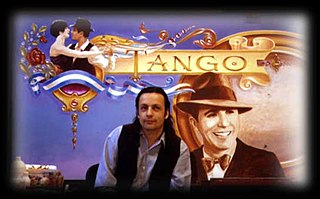
Jorge Muscia is a plastic artist and ‘fileteado’ instructor with over 30 years of experience in his field. Muscia, also known as the Fileteador of Tango, distinguishes himself for being a force in the revival of this old style of painting and for being a renowned instructor and promoter of the art of the filete in Argentina and the world.

Casa Amarilla was a railway station in the district of La Boca, Buenos Aires, built and operated by the Buenos Aires and Ensenada Port Railway. Its name was inspired on Irish Admiral William Brown's house, built in the same district and painted in yellow. Brown was one of the heroes of Argentine War of Independence leading the Argentine Navy.
Vicky Astori, known as Bice or Bicky Astori, was an Italian actress who made her career in Argentina.
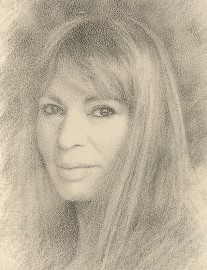
Susana Sivestre was an Argentine writer. She wrote the stories "El Espectáculo del mundo", which was awarded the Roberto Arlt Prize by the Municipality of Comodoro Rivadavia in 1982.
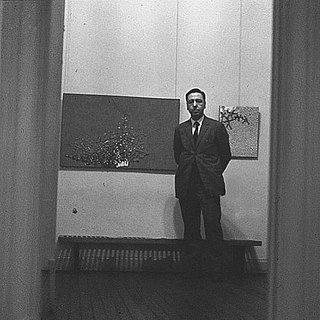
Roberto Lucio Pignataro (1928–2008) was an Argentine Informalist artist. He was known for the innovative composition technics he developed and diversity of styles he applied to his artwork.

















